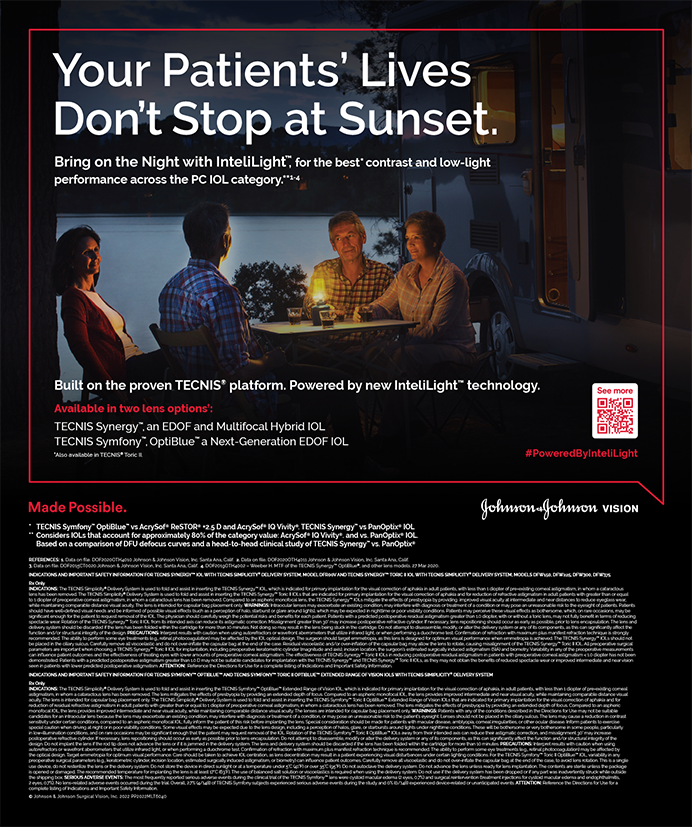Mobile health technologies, which include applications on handheld devices aimed to deliver health care services in the support of patients’ wellness, are transforming the ophthalmic industry. Practice management and electronic health record systems have evolved into clinical software solutions that help physicians to integrate and report meaningful use and Physician Quality Reporting System criteria. Many of these solutions, however, have concentrated solely on the provider’s practice flow; patient-facing platforms have largely been geared toward increasing the quality of care reported. Patient-facing programs promote health behavior management and disease management in a way that is comprehensive and easy for patients, promoting and empowering them to be engaged in their care process.
It is crucial for health care providers to involve patients in the health care process as much as possible through the use of technology, an ultimate goal of the Affordable Care Act and Health Information Technology for Economic and Clinical Health Act. The upcoming changes to the Physician Quality Reporting System indicate that the medical industry is moving away from a fee-for-service model and toward a pay-for-performance model.
The escalating penalties for those not attesting to meaningful use are driving an increasing number of physicians and practices to adopt mobile health technologies to better engage their patients. The purpose of the meaningful use regulations, ultimately, is to empower patients to drive their own positive outcomes and ensure that their care is coordinated and managed.
WIDE-REACHING BENEFITS
Mobile health solutions enable physicians to handle high-volume practices and ensure that all patients receive similar levels of care, two elements that will be vital to ophthalmic clinics’ success in the coming year. Patients with lower socioeconomic backgrounds have poor health outcomes due to difficulties accessing care and following through with treatment protocols. Chronic conditions such as diabetes, obesity, and glaucoma compose a large segment of the health care industry’s costs. For example, glaucoma and disorders of the optic nerve cost $5.8 billion annually, with an annual per-person treatment cost of $2,170.1
In the past, it was assumed that mobile health applications would improve care outcomes among those of lower socioeconomic status. Research has shown, however, that a majority of those in the lower socioeconomic bracket own phones that are compatible with short message service-based health interventions (Figure 1).2 This suggests that mobile health solutions can be used to target certain demographics and to increase their adherence to medical protocols. With the advances in wearable technology and sensors, gamified adherence platforms, and information tracking technology, mobile health applications have the capacity to radically improve individuals’ health (Figure 2).
A PATIENT-FACING PLATFORM
In our experience, patients’ education and engagement are directly linked to positive health outcomes. This realization has driven the evolution and design of CheckedUp a mobile health platform for ophthalmology that offers patient-driven messaging and education. CheckedUp is designed to help patients understand their conditions, search for leading physicians in their area, make informed surgical choices, and adhere to primary medical protocols. Additionally, the platform supports long-term adherence to one’s prescribed therapy through personalized content that is sent directly from the physician to his or her patients. Engaging video modules help patients to understand their conditions and then communicate with the physician about their treatment options and preferences.
We have found that a patient-facing approach increases the likelihood that patients will make a decision on surgery before leaving the doctor’s office. In CheckedUp’s multisite clinical trial, patients who used the platform prior to their office visit were more likely to choose an IOL before leaving the physician’s office. Additionally, at the trial’s highest-volume clinic, the conversion rate to laser surgery (from bladed) was more than 65% (unpublished data).
PERSONALIZATION AND EDUCATION
For mobile health technologies to be effective, physicians must adopt and familiarize themselves with patient-facing solutions. For many clinicians, their only adoption of health technology has been software for electronic medical record or practice management systems. Meaningful use, as a concept, is not only about fulfilling criteria and checking boxes; it is also about empowering patients through education, creating a patient-centric system, and involving them in their health care. For mobile health applications to be valuable, physicians should be aware of the mobile health space. They must also be able to recommend applications as well as analyze the collected data to improve the personalized care they offer.
Section Editor George O. Waring IV, MD, is the director of refractive surgery and an assistant professor of ophthalmology at the Storm Eye Institute, Medical University of South Carolina. He is also the medical director of the Magill Vision Center in Mt. Pleasant, South Carolina. Dr. Waring may be reached at waringg@musc.edu.
Richard M. Awdeh, MD, is a professor, surgeon, and director of Technology Transfer at the Bascom Palmer Eye Institute in Miami. He is the founder and CEO of CheckedUp, a mobile health company, and the founder of Cirle, a medical technology incubator. Dr. Awdeh may be reached at richard@checkedup.com.
- The cost of vision problems. The economic burden of vision loss and eye disorders in the United States. Prevent Blindess Web site. http://costofvision.preventblindness.org. Published 2013. Accessed February 18, 2014.
- Rahmati A, Zhong L. Studying smartphone usage: lessons from a four-month field study. IEEE Transactions on Mobile Computing. 2013;12.7:1417-1427.


